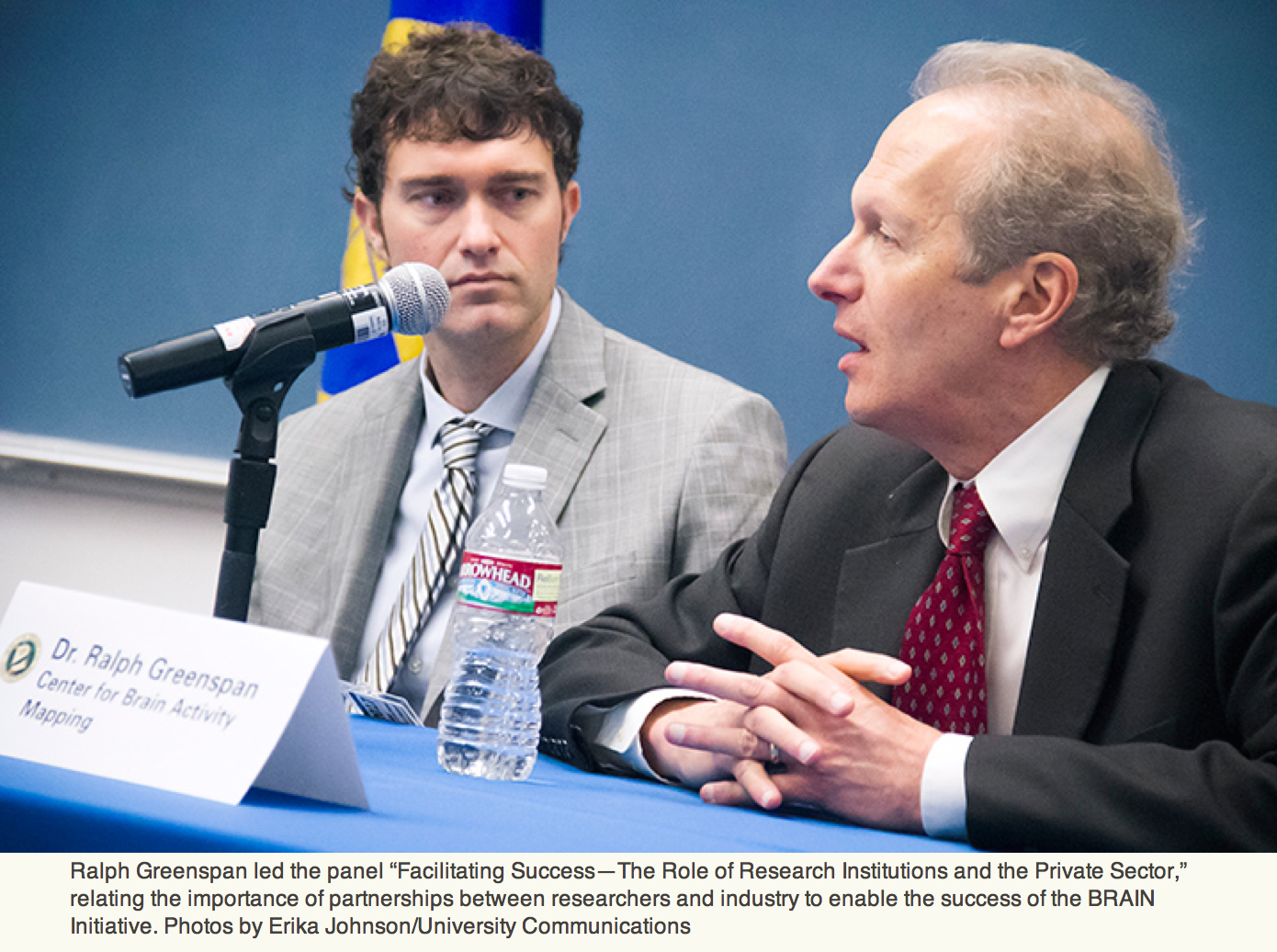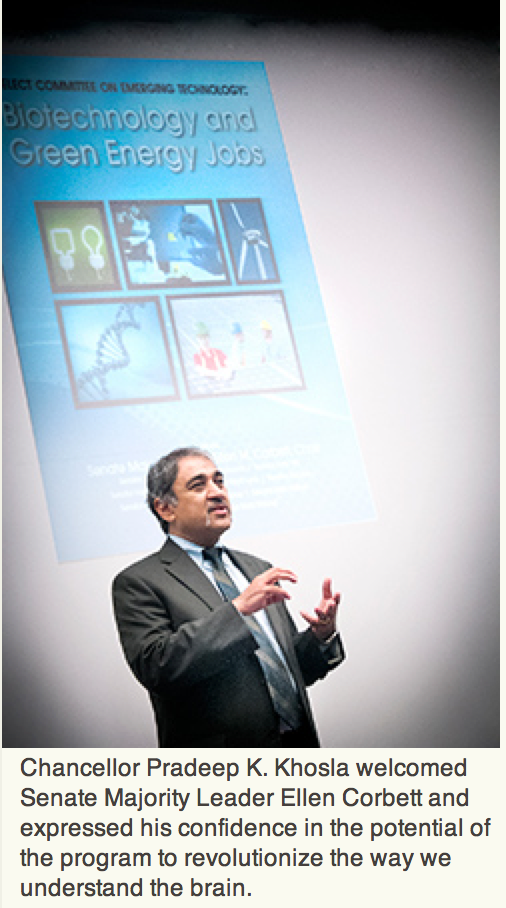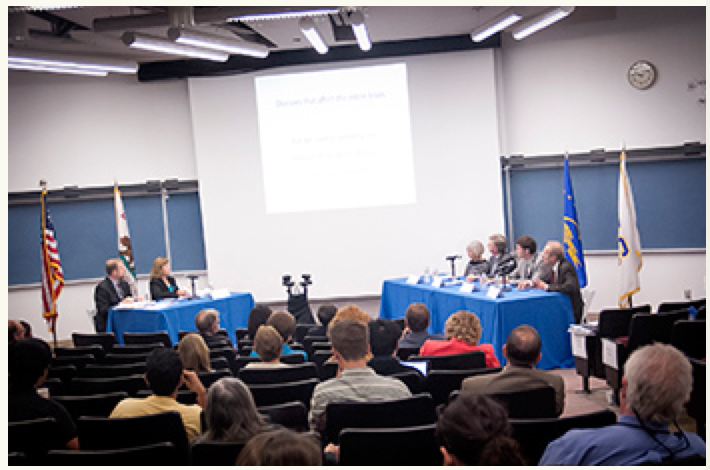Taking A Mindful Approach to the BRAIN Initiative
Oct 10th, 2013
By Christine Clark
ucsdnews

"As the epicenter of scientific innovation, California must take bold and prompt action to capitalize on the short- and long-term benefits of the BRAIN Initiative," said Senate Majority Leader Ellen M. Corbett (D-East Bay) at a Senate Select Committee on Emerging Technology: Biotechnology and Green Energy Jobs public hearing held Friday at UC San Diego.
The event, "A Mindful Approach to the BRAIN Initiative," was convened by Corbett. It explored the state's role in accelerating the research, development and deployment technologies to support the BRAIN (Brain Research through Advancing Innovative Neurotechnologies) Initiative, first unveiled by the Obama Administration in April 2013.
The research effort––in which UC San Diego, "Mesa" colleagues and private-public partners will play key roles––is designed to revolutionize understanding of how the brain works and uncover new ways to treat, prevent and cure brain disorders such as Alzheimer's, schizophrenia, autism, epilepsy and traumatic brain injury.
The discussions held Friday were attended by Chancellor Pradeep K. Khosla, who also was sitting in the front row at the White House when Obama made the BRAIN Initiative announcement on April 2.
 |
"The president's initiative is charting the next frontier of science and UC San Diego is poised and ready to help our country lead the way," said Khosla. "Neuroscience, biology, and cognitive science are among the premier areas of strength on our campus, and we are really excited to be part of the effort to gain a deep understanding of human beings and how we behave." In response to Obama's "grand challenge," UC San Diego established the Center for Brain Activity Mapping (CBAM) in May. The new center, headed by Ralph Greenspan, is under the aegis of the interdisciplinary Kavli Institute for Brain and Mind at UC San Diego. CBAM tackles the technological and biological challenge of developing a new generation of tools to enable recording of neuronal activity throughout the brain. It will also conduct brain-mapping experiments and analyze the collected data. "This is another example of how California is leading the way, both in terms of understanding the human mind and how we can cure Alzheimer's, dementia and other diseases, and also in creating technologies, new innovations and jobs," said Khosla. At the hearing, Corbett, who is chair of the Select Committee, said she intends to introduce legislation early next year that supports cutting-edge research like the BRAIN Initiative that can bring societal and economic benefits to California. |
|---|
"Twenty-five years ago, the Human Genome Project led to the 'genomic revolution' and advanced some of the leading industries in our state," she said, "The BRAIN Initiative is the next logical step." At the hearing, representatives from UC San Diego were joined by other academic and industry leaders in voicing strong support of the initiative. Those testifying included Greenspan, founding director of CBAM and associate director of the Kavli Institute for Brain and Mind at UC San Diego (KIBM); Terry Sejnowski of the Salk Institute for Biological Studies and UC San Diego and director of the campus's Institute for Neural Computation; and Ramesh Rao, director of the Qualcomm Institute, the UC San Diego division of Calit2. |
|
|---|
"The last century we went to the moon to explore outer space; this century we're exploring inner space by studying the link between brain activity and behavior," said Sejnowski. "We need to find what it is that excites young people. We need to attract bright young minds the way President John F. Kenney did … In 1969, the year we went to the moon, the average age of a NASA engineer was 27."
When asked by Corbett if the state of California was doing enough to support the education needed by the BRAIN initiative, Greenspan answered by saying that more science should be integrated into the general education curriculum. "It's is important to build STEM programs and make it accessible to students … Students need to see themselves as future scientists."
Corbett concluded the conversation by saying that she thought the discussions helped dispel the notion that people come to California only for the weather. "You come here for the education and innovation," she said.
